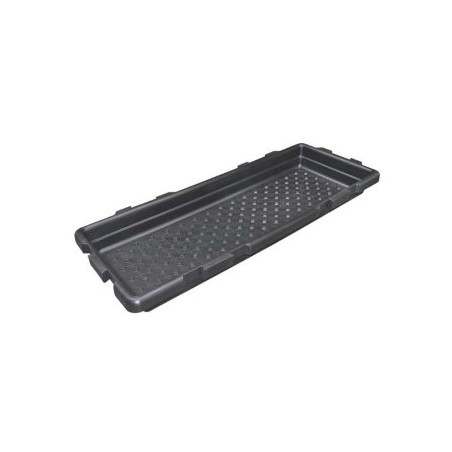Objectives: To describe gilt replacement strategies in regard to porcine reproductive and respiratory syndrome virus (PRRSV) and to assess differences between high density (HD) and moderate density (MD) pig areas.
Materials and methods: A cross-sectional study was conducted in breeding sites located in an HD (n = 68) and an MD area (n = 52) in Quebec between May 2005 and August 2008. A questionnaire on strategies used to introduce replacement gilts was completed and PRRSV status was assessed by enzyme-linked immunosorbent assay or reverse-transcription polymerase chain reaction. Sites housing at least one pig positive by either test were classified as PRRSV-positive. Strategies were described according to herd characteristics, PRRSV status, and area.

Results: Self-replacement and purchase of mature or immature gilts were observed on 37%, 35%, and 28% of sites, respectively. In positive sites purchasing mature gilts, 18% had a PRRSV-positive supplier, and gilts were introduced either directly into the sow herd (15%) or after isolation (41%) or acclimatization (44%). Most positive sites purchasing immature gilts practiced acclimatization (93%), either by commingling gilts with commercial pigs (93%) or inoculating serum (7%). Acclimatization processes were rarely monitored through diagnostic procedures. Lower sow inventory, higher prevalence of PRRSV infection, and higher frequency of self-replacement were observed in the HD compared to the MD area. Negative and positive sites practicing voluntary exposure to PRRSV both clustered spatially within the MD area.
In conclusion, this study identified specific issues regarding gilt replacement that could increase the probability of either introducing a PRRSV strain into a herd or promoting the circulation of an endemic strain. Acclimatization, which should be an effective method for controlling PRRSV in a sow herd, was the most poorly applied gilt introduction strategy pertaining to basic principles, particularly for mature gilts. Voluntary exposure of gilts to either PRRSV herd-endemic or vaccine strains has to be considered in any targeted intervention to control the disease regionally. Producers have to be well informed about the steps and rules they should adhere to and be supervised by veterinarians in order to improve their success rates in stabilizing their herds and minimizing potential impact on the neighborhood.
Lambert ME, Denicourt M, Poljak Z, et al. Gilt replacement strategies used in two swine production areas in Quebec in regard to porcine reproductive and respiratory syndrome virus. J Swine Health Prod. 2012;20(5):223–230.








